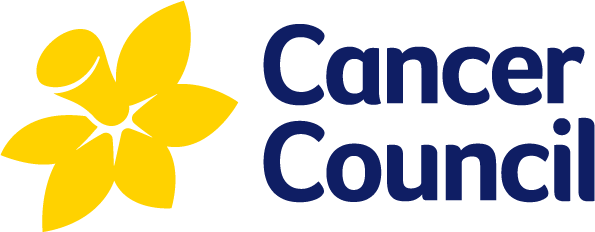Breast Cancer Early Detection Policy
Cancer Council Australia’s breast cancer policy presents information about breast cancer screening and related policy priorities to detect breast cancer earlier, reduce its impact, and to improve outcomes for individuals diagnosed with breast cancer.
This policy was developed by Cancer Council Australia’s Cancer Screening and Immunisation Committee and was endorsed by the principal Public Health Committee. It has been externally reviewed by leading experts including Dr Sue Fraser. This policy was published in March 2025.
Contact us at cancercontrolpolicy@cancer.org.au
Contents
- Overview
- Policy priorities
- Policy context & impact
- Screening
- Prevention
- Roadmap to optimising breast screening (ROSA)
Key policy priorities in summary
1. Equitably increase participation in breast cancer screening by ensuring improved access to BreastScreen Australia and actively encouraging participation among women in under-screened populations.
2. Support the implementation of risk-based screening in Australia.
3. Build community understanding of breast cancer modifiable risk factors
Breast cancer is the most commonly diagnosed cancer in women in Australia (excluding keratinocyte cancers), and is the second most common cause of cancer death in Australian women.(1) One in eight women in Australia will be diagnosed with breast cancer by the age of 85, and it was estimated that almost 3,300 women died from breast cancer in 2023.(2) Globally, Australia and New Zealand have the highest incidence rates of breast cancer, however the mortality rate is decreasing by 2.1% each year.(3)
Population-based mammography screening for breast cancer was introduced in 1991 through the BreastScreen Australia program. The program is available to asymptomatic women from the age of 40 and targeted to women aged 50-74 years through health promotion, invitation, and re-invitation. Since the implementation of BreastScreen Australia in 1991, breast cancer mortality rates have decreased by 50% among women aged 50-74 years.(4) Research findings have demonstrated a 49% reduction in breast cancer mortality for women who participate in breast cancer screening.(5) Further to this, BreastScreen Australia has been associated with an estimated 21-28% reduction in population breast cancer mortality, based on usual participation rates.(6)
More than 22% of breast cancer cases in Australia are associated with modifiable risk factors such as overweight and obesity, physical inactivity, tobacco, and alcohol use.(7, 8) Non-modifiable personal or physical risk factors include age, family history, genetics, breast conditions, and a range of reproductive factors, including increased levels of certain hormones, including estrogen (endogenous and exogenous).(9-11)
A risk-based approach to breast screening, in which individuals are selected for screening based on more individualised risk factors, rather than age alone, may reduce potential harms and reduce the substantial public health impact of breast cancer.(12) In 2023, Cancer Council completed the four-year Roadmap to Optimising Screening in Australia – Breast (ROSA) project with funding from the Australian Department of Health and Aged Care to explore options for potential risk-based breast cancer screening in Australia and produced eight domains of recommendations to address crucial evidence gaps and support future implementation of risk-based screening in Australia.(13)
Cancer Council’s breast cancer policy outlines the impact of breast cancer in Australia and breast cancer risk factors and presents the evidence around population-based mammography screening for breast cancer, including information on targeted risk-based screening. It also includes information on the current policy context in Australia and identifies our key policy priorities for action to reduce the impact of breast cancer in Australia.
For information and support following a breast cancer diagnosis, please visit the breast cancer webpage or call 13 11 20 for free and confidential support provided by Cancer Council in each state and territory.
For further information on the ROSA project, please visit the Roadmap for Optimising Screening in Australia – Breast.
Recently, Cancer Council Australia launched outcomes and findings from the Roadmap for Optimising Screening in Australia - Breast Project (ROSA). ROSA aimed to explore options for potential risk-based breast cancer screening in Australia.
Roadmap for Optimising Screening in Australia — Breast
Investigating risk-based breast cancer screening in Australia
References
- Australian Institute of Health and Welfare. Cancer in Australia 2021. Canberra: AIHW; 2021.
- Australian Institute of Health and Welfare. Cancer data in Australia. Canberra: AIHW; 2023.
- Kim J, Harper A, McCormack V, Sung H, Houssami N, Morgan E, et al. Global patterns and trends in breast cancer incidence and mortality across 185 countries. Nature Medicine. 2025.
- Australian Institute of Health and Welfare. BreastScreen Australia monitoring report 2024. Canberra: AIHW; 2024.
- Nickson C, Mason KE, English DR, Kavanagh AM. Mammographic Screening and Breast Cancer Mortality: A Case–Control Study and Meta-analysis. Cancer Epidemiology, Biomarkers & Prevention. 2012;21(9):1479-88.
- Morrell S, Taylor R, Roder D, Dobson A. Mammography screening and breast cancer mortality in Australia: an aggregate cohort study. J Med Screen. 2012;19(1):26-34.
- Wilson LF, Antonsson A, Green AC, Jordan SJ, Kendall BJ, Nagle CM, et al. How many cancer cases and deaths are potentially preventable? Estimates for Australia in 2013. International Journal of Cancer. 2018;142(4):691-701.
- He Y, Si Y, Li X, Hong J, Yu C, He N. The relationship between tobacco and breast cancer incidence: A systematic review and meta-analysis of observational studies. Frontiers in Oncology. 2022;12.
- Cancer Australia. Breast Cancer 2024 [Available from: https://canceraustralia.gov.au/cancer-types/breast-cancer/awareness/what-are-risk-factors-breast-cancer.
- National Cancer Institute. Cancer Causes and Prevention - Hormones: U.S. Department of Health and Human Services, National Institutes of Health; 2015 [Available from: https://www.cancer.gov/about-cancer/causes-prevention/risk/hormones.
- Cancer Australia. Breast Cancer - Risk factors Australian Government; 2024 [Available from: https://www.breastcancerriskfactors.gov.au/node/55.
- Clift AK, Dodwell D, Lord S, Petrou S, Brady SM, Collins GS, et al. The current status of risk-stratified breast screening. British Journal of Cancer. 2022;126(4):533-50.
- The Daffodil Centre. The ROSA Project - summary. Summary of 'Roadmap for Optimising Screening in Australia - Breast', investigating risk-based breast cancer screening. Produced by the Daffodil Centre on behalf of Cancer Council Australia; 2023.
Explore our Early Detection Policy.
